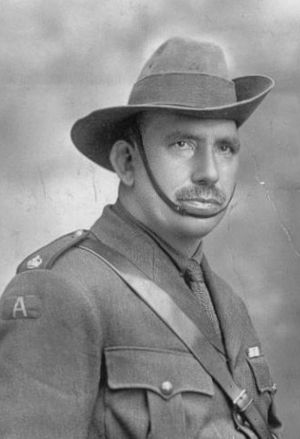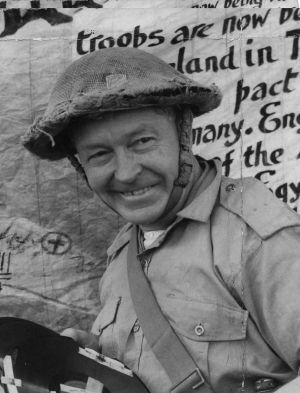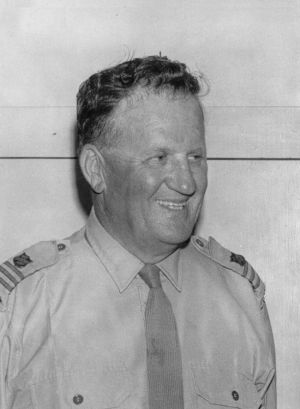Fighting Macs stand tall in theatres of war
24 April 2021

Salvos chaplains remembered for heroic service
Words Lindsay Cox
Three different wars in different terrains during different eras involved three different men who shared the nickname ‘Fighting Mac’.
The muddy trenches in France in 1916 were a huge contrast to the arid desert foxholes of North Africa 25 years later; and the steamy jungle dugouts of Vietnam a further 25 years on contrasted with the former two.
William McKenzie was 47 years old when he arrived in France with the 4th Infantry Battalion at the end of 1915; Arthur McIlveen was 55 and attached to the 2/9th Infantry Battalion when he landed in North Africa in 1941; and James Macintyre was in his late 40s when he served the infantrymen of the 8th Battalion Royal Australia Regiment in 1969.
These three men were Salvation Army officers appointed to the War Services Department and had received little or no military or physical fitness training prior to being appointed. But they endured the same risks as frontline soldiers half their ages, living and working with them, never shirking any hardship or danger, while at the same time providing a fulsome service to keep up the morale of the troops.
WORLD WAR ONE
The first ‘Fighting Mac’ was Chaplain-Major William McKenzie, who had landed at Gallipoli in 1915 with the 4th Battalion and then accompanied them to the trenches in France some 12 months later.
McKenzie explained what he felt was his most important duty in France: “We went out to meet the chaps coming back from the fighting line and gave them a song home. We sang to them, played to them, joked to them. The great thing was to make them forget as soon as possible the hell they’ve come from.”
 William McKenzie arrived in France at the age of 47.
William McKenzie arrived in France at the age of 47.
From the trenches, Private Tom Smith of the Australian Army Service Corps wrote to his brother in September 1916: “The bravest man here is ‘Fighting Mac’, the only clergyman that was in the trenches and was out in front bringing in wounded and burying dead.”
WORLD WAR TWO
About a quarter of a century later, another ‘Fighting Mac’ emerged – Red Shield Representative Arthur McIlveen, a philanthropic welfare officer appointed to the 18th Brigade, who served in the Middle East. There he spent April to October 1941 in Tobruk, besieged by the German Afrika Korps, where he became one of the so-called ‘Rats of Tobruk’.
 Arthur McIlveen landed in North Africa in 1941.
Arthur McIlveen landed in North Africa in 1941.
A company commander from the 2/9th Battalion wrote to Salvation Army headquarters: “Your Brigadier McIlveen was probably the most blitzed man in Tobruk; in the Red Shield House or up front with the troops he did his duty, regardless of danger.”
VIETNAM
The third ‘Fighting Mac’ of this trilogy was Red Shield Representative James Macintyre. As a young Salvation Army lieutenant at the start of World War Two, Macintyre had been one of the first Red Shield Welfare officers appointed in Australia. And just over a quarter of a century later he was again in the same role but posted to South Vietnam.
 James Macintyre served in Vietnam.
James Macintyre served in Vietnam.
Lieutenant Ian Smith, a platoon commander in 8RAR during the Vietnam War, recalled this particular ‘Fighting Mac’ as someone who wasn’t content to stay behind his troops: “The Sallyman used to go all over the action, God bless him … in his Land Rover with his little soldier-assistant driving and helping him carry the tea urn and such.”
Macintyre experienced many close shaves and incidents during his service, but it did not deflect him from his mission: “Nothing was more important than my determination to look after the boys of the battalion,” he once said.
THREE MEN, ONE AIM
Three men nicknamed ‘Fighting Mac’ with one aim – to minister spiritually and temporally to Australian soldiers in time of war. These three ‘Fighting Macs’ followed Australian soldiers up and down the fire-swept ridges, carrying drinks and comforts, often tramping miles for their mail; praying with them, helping them to live, supporting them as they died. They buried those brave young men fallen in battle and spent time far into the night writing to relatives of deceased soldiers.
Three men living their belief of heart to God and hand to man.
CUPPA TEA, DIGGER?
For more stories like these, based largely on more than 180 oral histories of diggers and Salvos’ philanthropic Red Shield War Services (RSWS) personnel during World War Two, Lindsay’s book, Cuppa Tea, Digger? Salvos Serving In World War Two, is now available, at a cost of $80. Order online at commerce.salvationarmy. org.au or call 1800 100 018.
Lindsay Cox is Manager of The Salvation Army Australia Museum.

Comments
No comments yet - be the first.